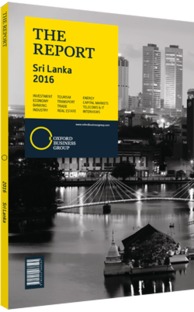Sri Lanka's government makes rapidly expanding cruise tourism a priority
In early October 2015 the Sri Lanka Tourism Promotions Bureau (SLTPB) announced that the nation planned to make a major investment in cruise tourism, which has been an increasingly important source of visitor arrivals in recent years. The government’s development initiative, known as the Cruise Tourism Marketing Plan, aims to turn the cruise segment into a top-five source of tourist revenues for the country and attract ships carrying more than 100,000 visitors in total each year – more than double the number of cruise visitor arrivals registered in 2015.
Plans put forward earlier in 2015 by the Sri Lanka Ports Authority (SLPA) will see the port operator convert an old general cargo terminal at Fort, in the heart of Colombo, into a full-service international cruise terminal at a cost of $50m-75m. “The cruise sector has grown considerably in recent years,” Mahen Kariyawasan, the managing director of Andrew, an independent tour operator, and the immediate past president of the Sri Lanka Association of Inbound Tour Operators (SLAITO), told OBG in October 2015. “Sri Lankan tourism is expected to become a SLR3bn ($21.6m) industry in the near future; cruise tourism is will play an important role in this growth.”
Recent Expansion
The SLTPB’s announcement comes at a high point in the cruise segment in Sri Lanka and throughout the wider region. “Cruise travel, which attracts the wealthiest globally, has doubled in business for Sri Lanka,” Rohantha Athukorala, chairman of the SLTPB, told local media in April 2015. Indeed, while final numbers for 2015 had yet to be released at the time of writing, the SLTPB’s estimated data indicates that around 40 cruise ships with more than 50,000 passengers on board called at Sri Lankan ports over the course of the year. This represents a significant jump on 2014, when the country attracted 22 liners and 27,317 passengers. In 2016, the most notable docking so far was the MS Rotterdam: one of the biggest cruise ships in the world, carrying 1600 passengers and 600 staff, it docked at Hambantota Port, signalling a new era for cruise tourism at the island’s southern ports.
Buying In
Sri Lanka’s tourism industry is currently working to bolster the country’s growing reputation as a cruise destination. In April 2015 SLAITO launched a working group to support the industry, with an view to improving various technical operations on the supply side, including baggage handling and domestic travel logistics. In mid-2015 the SLTPB announced that the government had allocated SLR5bn ($36m) to promote Sri Lanka as a cruise destination. The financing was put towards representing the industry at various cruise tourism travel fairs, including the largest such event, which took place in South Korea in July.
These efforts were followed up by the SLPA’s announcement in mid-2015 that it planned to convert Colombo Port’s Bandaranaike Quay into a dedicated cruise terminal. A timeline for this project had not yet been set at the time of publication. More recently, in October 2015, the SLTPB launched the Cruise Tourism Marketing Plan, which was developed and will be implemented in conjunction with SLAITO and The Hotels Association of Sri Lanka. The plan is a formalised version of the efforts taken by SLAITO earlier in the year, and will involve promoting Sri Lanka at tourism fairs and other events, as well as launching various other advertising campaigns and programmes.
With the industry working to attract 100,000 cruise visitors in 2016 – double the 2015 figure – the focus will be on quality of delivery. “We must get the supply chain aspects developed concurrently to the demand chain planning as per the marketing plan that has been sketched out if we are to make Sri Lanka a turnaround port,” said John Amaratunga, the minister of tourism, in a speech delivered at the plan’s launch. So long as the state’s plans move forward as expected, most local players expect continued growth in Sri Lanka’s cruise tourism industry for years to come.
You have reached the limit of premium articles you can view for free.
Choose from the options below to purchase print or digital editions of our Reports. You can also purchase a website subscription giving you unlimited access to all of our Reports online for 12 months.
If you have already purchased this Report or have a website subscription, please login to continue.

